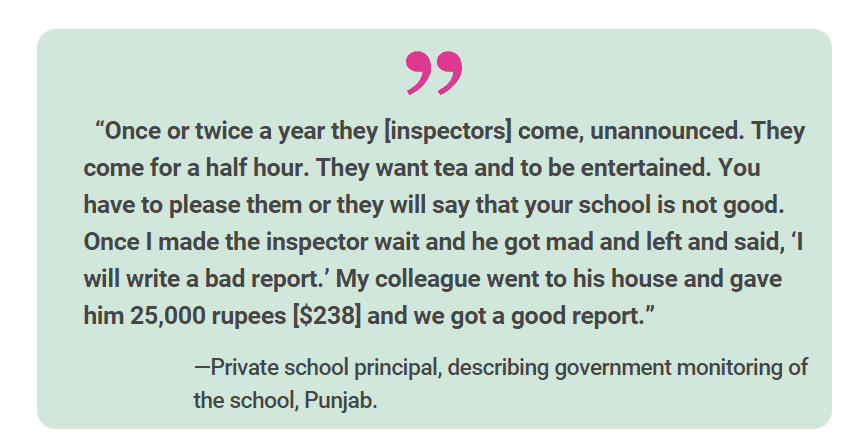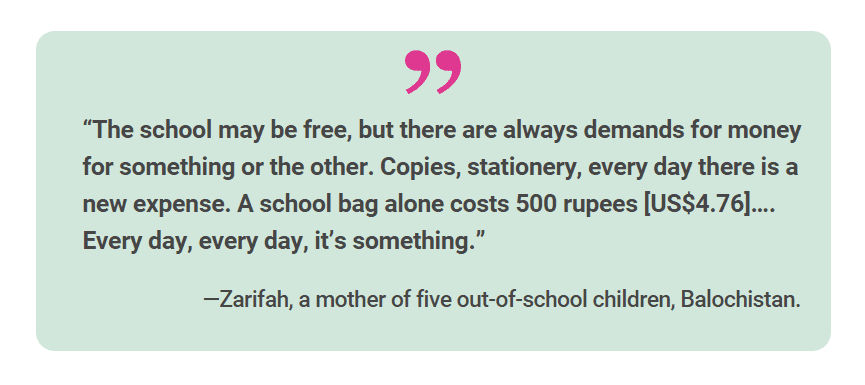'Shall I feed my daughter or educate her?': The abysmal state of girls' education in Pakistan

Pakistan is failing to educate a huge proportion of the country's girls, who have little or no access to education, notes a recent report released by Human Rights Watch (HRW).
The report called 'Shall I Feed My Daughter, or Educate Her?', catalogs barriers to girl's education based on over 200 interviews – most of them with girls who never attended school or were unable to complete their education, and their families – conducted in all four of Pakistan’s provinces in places like Peshawar, Quetta, Karachi, Lahore, and several nearby rural areas.
The report concludes that in a country of 200 million, a shocking 22 million children are out of school — with a majority of them being girls.
In fact, by 9th grade only 13 percent of girls are still in school.
Also read: 10 alarming statistics about Pakistan’s out-of-school children
“The Pakistan government’s failure to educate children is having a devastating impact on millions of girls. Many of the girls we interviewed are desperate to study, but instead are growing up without the education that would help them have options for their future.” — ” Liesl Gerntholtz, women’s rights director at HRW.
“Even parents who are not educated themselves understand that their daughters’ future depends on them going to school, but the government is abandoning these families,” Gerntholtz said.
As of 2017, Pakistan was spending less than 2.8 percent of its gross domestic product on education – far below the recommended 4 to 6 percent.
Below are some of the factors that keep girls out of schools, as highlighted by the report:
1. A wildly inadequate government school system
There is a lack of a functioning school system.
Many children have no real access to a school, and many others can access only prohibitively expensive private schools.
The government doesn’t provide anything approaching the number of schools necessary to educate Pakistan’s children.
There are many more schools for boys than for girls, and it is more difficult for girls to walk long distances to school. This helps explain the disparity between girls and boys.

2. Chronic under-investment in education
Pakistan spends less than 2.8 percent of its GDP on education.
The government would need to double its expenditure on education to be able to meet the Sustainable Development Goal of universal completion of secondary education by 2030.

3. Flourishing unregulated private sector means poor quality private schools
The private sector has filled the gap and operating schools has become a lucrative business.
Private schools are almost entirely unregulated by the government.
Low-cost private schools are often of poor quality, with unqualified and poorly-paid teachers.

4. Corruption contributes to poor quality government schools
Government schools are also often of poor quality that parents see no point in sending their children to them.
A major problem in government schools is corruption—many teachers gain jobs via bribery or nepotism and may not be qualified/interested in teaching or even show up.


5. No education is free
Families below the poverty line have little or no ability to pay for education.
Even “free” government schools require parents to pay for uniforms, shoes, school supplies and exam fees. These expenses make it impossible for many poor children to study or continue their education.

6. No effort has been made to make education compulsory
- The constitution makes education free and compulsory for children ages 5-16, but in reality the needed schools don’t exist and the government makes no systematic effort to get children into schools or keep them there.

7. Girls face discrimination
Gender discrimination including families prioritising boys’ education, sexual harassment on the way to school, child marriage, and harmful social norms.
External factors also include child labour, insecurity and attacks on education.


Key recommendations by HRW:
Spend more money. Double the expenditure on education, as recommended by UNESCO.
Provide equal access for girls and boys.
Improve the quality of both government and private schools.
Implement the constitution’s promise of compulsory education to age 16.
Compiled by Shahbano Ali Khan




